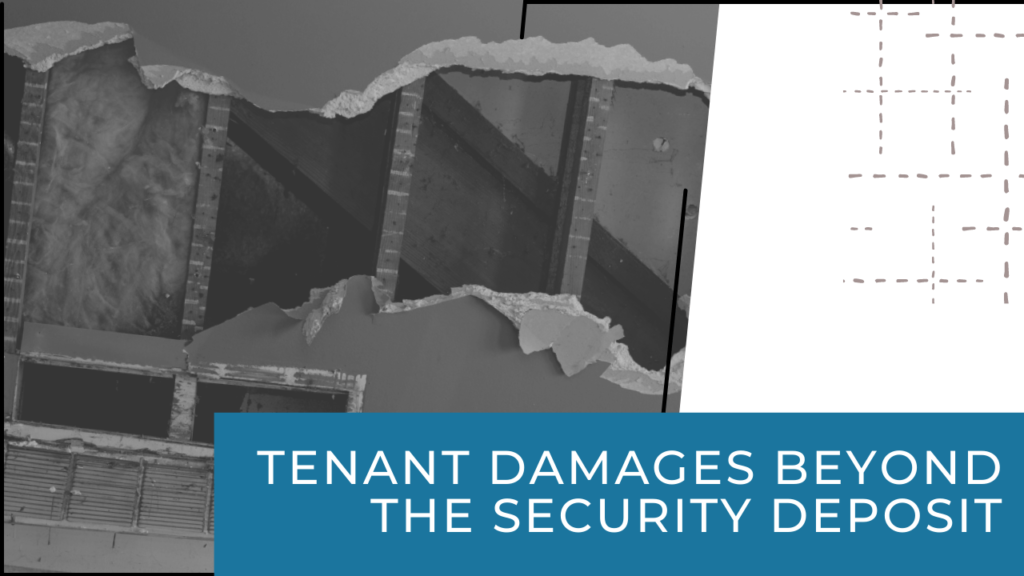
Tenant damage is a common fear for all rental property owners – whether it’s accidental damage or worse.
What happens if you place a tenant who ends up destroying your home, leaving you to pay for all the repairs that exceed the tenant’s security deposit? There will be a lot of time and costs involved in getting that property back into shape.
We understand your concerns.
Here’s the good news: Extreme tenant damage is rare, especially if you’re working with a Kelowna property management company.
The bad news is this: You never really know how a tenant is going to behave, so it’s important to understand landlord rights in BC – or anywhere else you own rental properties.
Here are some things that may help when you find yourself dealing with – or trying to prevent – tenant damage.
First, Create a Strong Rental Agreement
In British Columbia, Canada, the Residential Tenancy Act governs the relationship between the landlord and tenant. According to this act, tenants are responsible for repairing any damage caused by their own actions or the actions of their guests.
In the event that your tenant destroys property, and those damages exceed the security deposit, a strong lease agreement protects your interests.
If you notice that there’s a lot of damage left behind, your first step needs to be checking your lease agreement. It should clearly state what happens when property damage is caused by your tenants. Having such written documentation can help you seek compensation if you need to charge tenants for any repair costs.
Understand Normal Wear & Tear
In BC, landlords are generally responsible for normal wear and tear, which refers to the deterioration that occurs over time with the normal use of the property, even if the tenant has taken reasonable care of the premises.
Examples of normal wear and tear include:
- Faded paint or minor discoloration of wallpaper
- Worn carpets or flooring in high traffic areas
- Small nail holes from hanging pictures or decorations
- Minor scuffs or marks on walls from regular use
- Fading of curtains or blinds due to sunlight
Landlords cannot deduct money from a tenant’s security deposit for normal wear and tear. However, if there is damage beyond normal wear and tear, the landlord may be entitled to deduct the cost of repairs from the security deposit. The key is to distinguish between damage caused by the tenant’s negligence or intentional actions and the normal aging of the property.
That’s why it’s important to conduct regular property inspections. If you learn that your property is due to tenant negligence, an unruly pet, or intentional mischief, it’s important to serve an eviction notice to prevent further damages and make way for a new tenant.
Documenting Tenant Damage During Inspections
Most landlords don’t realize there’s been damage left behind until after the tenant has moved out. Once you show up at the property to conduct the move-out inspection, you might find a mess. If this is the case, take a lot of pictures and videos, and keep notes that reflect what you’re seeing. You’ll need to be able to compare the property’s condition now to the way it looked before a tenant moved in.
As soon as you see that damage has been done, focus on getting the place repaired. Contacting the tenant and collecting the money that’s needed for repairs is important, but getting your rental unit back on the rental market is even more important.
It will help if you already have relationships in place with reliable vendors and contractors who can respond to your work requests quickly. They should be willing to come out to your property and estimate how much it will cost to get everything repaired.
Make a Demand for Payment
Prepare an itemized list of deductions which will justify why you keep the entire security deposit. When the damage exceeds that amount, send the tenant an invoice for what is still due. Ask that they pay in a specific amount of time, usually 10 to 30 days, or according to a payment plan agreed to by all parties involved.
It’s hard to know how a tenant will respond. Maybe they’ll want to protect their reputation and they’ll pay for those outstanding damages right away. It’s more likely, however, you will have to decide whether to absorb those costs yourself or hire an attorney to collect the remaining funds. If you do decide to to pursue legal action in civil court to seek restitution (financial repayment), you’re more likely to get a successful outcome with the help of an experienced legal professional who can guide you through the proper procedures for small claims court. If your tenant does not show up to small claims court, you can file a police report as they may be liable for criminal charges.
Check Your Insurance Policy
In the unfortunate event that tenant damages exceed the security deposit and you find yourself facing extensive repair costs, check with your insurance company to see if your landlord insurance will cover any of the damages.
Landlord insurance may offer protection against unexpected property damage due to malicious damage or vandalism, providing you with some financial relief in situations where tenants are unable or unwilling to cover the costs. While insurance cannot prevent property damage, it serves as a valuable safety net when you need it the most.
 We can help you if you find yourself in this unfortunate circumstance. We can also talk about some of the best ways to prevent tenant damage, including rigorous screening, inspections, and positive tenant relationships. Contact us at Vantage West Property Management for any questions on this topic or anything pertaining to Kelowna property management.
We can help you if you find yourself in this unfortunate circumstance. We can also talk about some of the best ways to prevent tenant damage, including rigorous screening, inspections, and positive tenant relationships. Contact us at Vantage West Property Management for any questions on this topic or anything pertaining to Kelowna property management.
